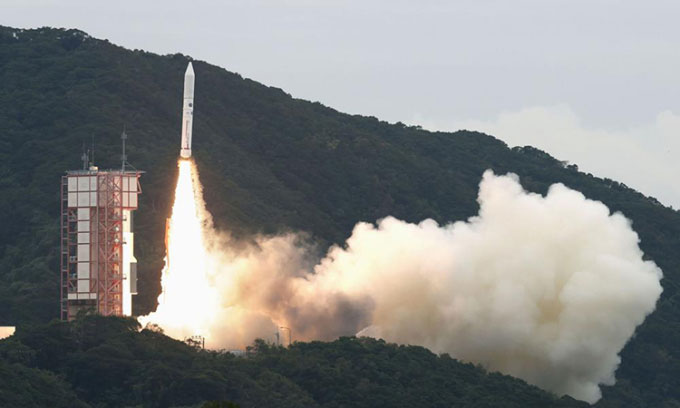The first satellite launch of Japan this year did not go as planned, resulting in the destruction of the rocket.
The Epsilon-6 rocket lifted off from the Uchinoura Space Center at 7:50 AM on October 12 (Hanoi time) as part of the Innovative Satellite Technology Demonstration 3 mission. Initially, everything went smoothly, with the first two stages of the rocket functioning normally, as described by commentators during the launch broadcast by the Japan Aerospace Exploration Agency (JAXA).

The Epsilon-6 rocket launched from the Uchinoura Space Center in Kimotsuki, Kagoshima Prefecture, southern Japan, on October 12. (Photo: Kyodo News/AP)
However, issues appeared around the time the third stage was supposed to ignite. As a result, mission control personnel activated the Epsilon’s flight termination system, leading to the rocket’s destruction.
“We ordered the destruction of the rocket because if it could not reach orbit as planned, we did not know where it would go. This raised safety concerns for the area where the rocket would fall,” explained Yasuhiro Funo, a JAXA expert in charge of the project. He added that after the mission was aborted, parts of the rocket would fall into the waters east of the Philippines. JAXA is investigating the specific cause of the incident.
In the launch yesterday, the approximately 26-meter-long Epsilon-6 rocket was expected to place the RAISE 3 satellite into orbit. This satellite, weighing 110 kg, integrated seven technology demonstration devices including two experimental thrusters (one designed to use water as fuel), a “sail” to help lower the satellite’s orbit, a power-generating membrane structure that could serve as an antenna, telecommunications equipment, a high-speed receiver, and a commercial graphics processing unit. Additionally, five other tiny satellites were also launched alongside RAISE 3 on the Epsilon-6 rocket.
This marks Japan’s first major launch failure in nearly two decades and the only failure to date for Epsilon, a solid-fuel rocket that has successfully completed five missions since its debut in 2013. The last time JAXA experienced a failed space launch was with the H-IIA rocket in 2003. Meanwhile, the only other instance where JAXA ordered the destruction of a rocket, aside from yesterday’s launch, was in 1999.


















































